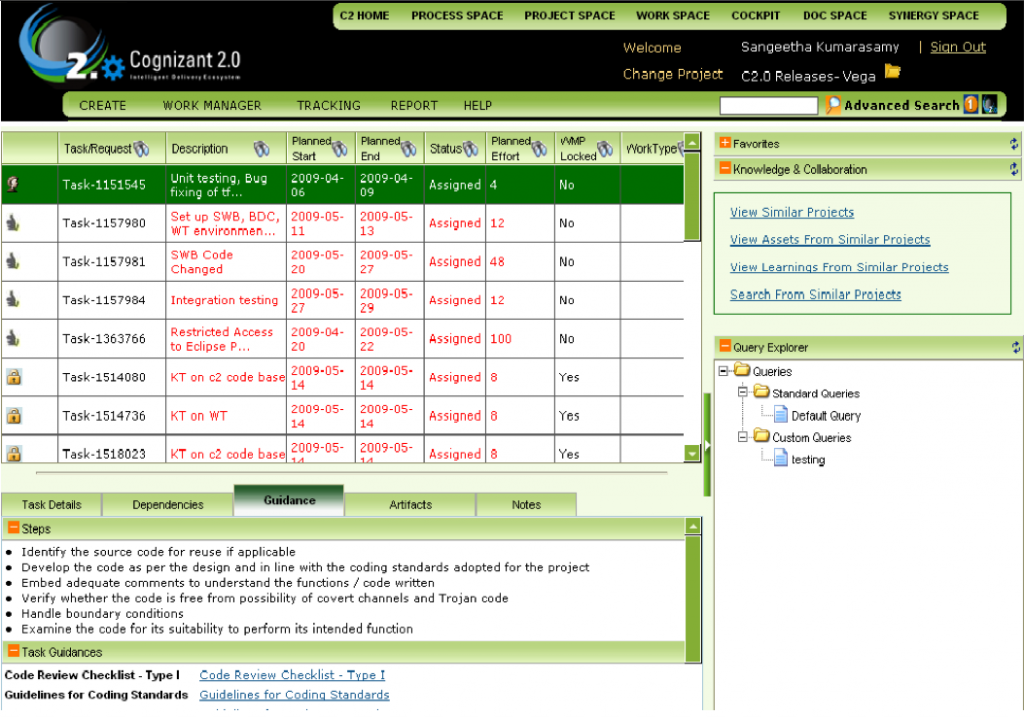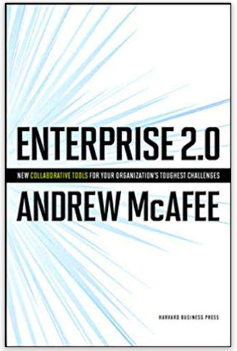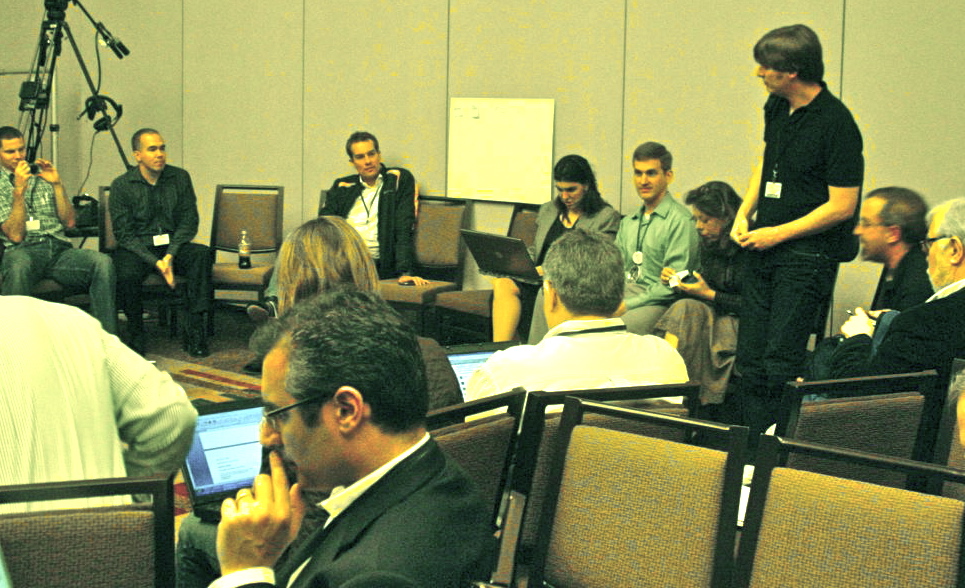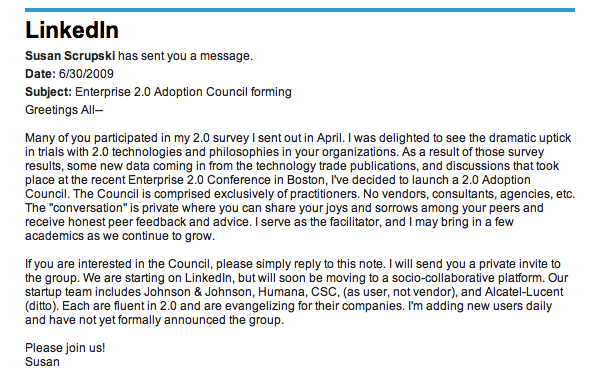As many of you know, I spent the first half of my career in the IT space tracking the IT services sector. The business of large-scale systems integrators and outsourcers wasn’t always thrilling, but boy-oh-boy, did those firms rake in the big bucks. Contracts weren’t even worth mentioning if they didn’t register in the hundreds of millions. At one point in the “megadeal” market for IT outsourcing, a contract would have to be in the billions to earn that designation.
Sigh.
I often wonder how my old friends in the SI/Outsourcer space are doing, and if in fact, any are adopting 2.0 technologies or practices internally or recommending them to their large customer bases. So, it was a pleasant surprise to reconnect with an old friend, Alan Alper, who is now working for another old friend, Malcolm Frank, both now at Cognizant— a large-scale integrator/outsourcer.
It turns out Cognizant is making productive use of 2.0 technologies and practices, and has realized some identifiable business results already. The company began an initiative about two years ago called, “Cognizant 2.0.” Essentially, the Cognizant 2.0 platform is a combination knowledge management/project workflow tool that incorporates 2.0 technology to leverage the combined intelligence and skills across Cognizant’s entire 60K workforce. What’s interesting about Cognizant 2.0 is that employees use the same tools they’re used to using in the workplace: Microsoft Project, Office, SharePoint, as well as their ERP systems. The platform integrates these enterprise “native” tools into a unique view that crosses time zones and geographic boundaries to glue the company’s expertise together. Dashboards now monitor critical project tasks and provide project teams with detailed, real-time access to workflow activities, information, targets, and deliverables. Internal blogging for the company has produced some surprising results. It grew essentially organically within the company as a means of communication and sharing and now includes non-related work content such as discussing charitable causes, movies reviews, weather, photography, and affinity-based professional interests.

Cognizant estimates the new collaborative platform improves project cycle times on average about 20%. With more than a third (37%) of the company’s application development projects running through the platform, it encompasses over 4,000 projects at what will soon span more than 600 customers. One of the greatest gains has been a 70% productivity improvement for project managers who formerly used the company’s previous project management tool. About 20% of the workforce (over 10K), including the company CEO Francisco d’Souza, are blogging internally on the platform with over 3-5 million page views a month.
Customer satisfaction numbers for Cognizant have always been high (near 90% in recent years), but the advantages of working collaboratively and socially has given Cognizant a distinctive advantage vis-a-vis its competitors in a hotly contested space. In essence, the company has moved from “labor arbitrage” to what it now refers to as “intellectual arbitrage.” The Cognizant example is an excellent one that truly demonstrates business advantage to a large enterprise. The company intends on extending the platform to include suppliers and customers in upcoming releases.
If I had to point out a deficiency for Cognizant 2.0, like its enterprise software components, it’s not sexy. It could use a trendy 2.0 UI/UX makeover to make it more appealing to users. But considering most of Cognizant’s workforce is comfortable with plain-old-vanilla enterprise software for everyday use, there is probably no urgent need to doll up the platform. Moreover, as Cognizant is a public company with nearly $3B in revenue and an $8B market cap, the company’s priorities might well be more focused on business results than design awards. I give it a thumbs up for innovation, adoption, and an impressive approach to integrating the old with the new– which is what I’d hope to see from a world-class systems integrator.
 The news about Sarah Palin broke today while I was working. Where did I see the news? Twitter (of course). Seconds turned to minutes, and I found myself impatient with not knowing the inside scoop on the why behind the resignation. What was the target of my impatience? The Twitter community. Seems ridiculous, but it’s just expected these days that you’ll get to the heart of a breaking story within seconds.
The news about Sarah Palin broke today while I was working. Where did I see the news? Twitter (of course). Seconds turned to minutes, and I found myself impatient with not knowing the inside scoop on the why behind the resignation. What was the target of my impatience? The Twitter community. Seems ridiculous, but it’s just expected these days that you’ll get to the heart of a breaking story within seconds.
 Yes, the baby was
Yes, the baby was 

 Well, it’s that time of year again. The
Well, it’s that time of year again. The